I fished this past Saturday, and again on Sunday. It was cold — mid 30s — and every once in a while the skies, which were dark and threatening, decided to dump rain on me. Rain, of course, has no place in Montana in January when, by all rights, the precipitation should be white. Still, rain is what we had.
I gave the Swan a shot on Saturday. It’s a beautiful river, with not only the traditional riffles, runs and pools of a classic freestone stream but also the sinuous curves that, were I talking about a woman rather than a waterway, would inflame the passions of young men the world over. As it was, though, the Swan proved to be a tease. While the water was in great shape and while I ended up swinging a streamer through a long and inviting slot that has given up some truly large rainbow trout over the years, no one was home. I fished deep and slow, and then even deeper and slower, and I tried all the little cold-water streamer tricks that can help tempt a lethargic mid-winter trout into grabbing an easy meal.
No dice. While I ticked the bottom a whole bunch, I never had a grab I could identify with any degree of certainty. And then, as I reached the very end of the slot and the rain finally turned from sporadic to soaking, I abandoned all hope, climbed back up on the snow-covered bank and headed for the truck.
Sunday proved to be another damp, chilly day, with a low, grey ceiling of clouds that, in the distance, seemed to sink down and merge seamlessly into the dull, grey river. I was on the Flathead, which is much larger than the Swan, and the stretch I was fishing ran rail-straight downstream for what looked to be a mile or more until the horizon simply vanished into the mist.
It’s a little weird to fish that stretch, which lacks anything approaching structure, or even anything that might point to where the fish could be holding. All I can say to recommend that particular spot is that I’ve caught trout there before, including a very large cutthroat a mere week earlier, and that section of river feels, if not alluring, at least mid-winter fishy. You can look at the water, which, over the course of a quarter mile, slowly transitions from a walking pace to just this side of froggy, and imagine those big, sleepy rainbows and cutthroats hunkering down and mellowing out, completely clear of the current, content to sip the occasional midge pupa and wait patiently for the eventual quickening of spring.
I decided that I was in the mood to swing flies again and since the Flathead reminds me of one of those massive British Columbia steelhead rivers that drain the vast boreal interior, that’s exactly what I did. The only difference was that instead of fishing a 10’ 8-weight for fish that might top 20 pounds, I was throwing a 9’ 4-weight with a 5-weight sink tip line, while hoping for a fish that topped 20 inches.
(Don’t worry. I’m eventually going to write a story about how most of today’s modern 4-weights are really 5-weights and 6-weights in disguise, and how you need to make a rod bend in order to get it to perform. I’m just not going to write that particular piece today.)
Regardless, different day, same results. I made what looked to be good cast after good cast, through water that probably held at least a few nice trout, to no effect at all. Now I didn’t change flies, so maybe that was my mistake. Nor did I switch it up and fish nymphs, which, in retrospect, may well have made a difference. But I did stay focused, and I fished hard, and I eventually walked away with no trout — not a single one — for my efforts.
Which brings me to my first really important point. It’s my job to define my success on the water. Nobody else’s. Mine.
I could have spent the weekend working, which is something I do on a frequent basis. I could have plopped myself down in front of the tube and watched a movie. I could have gotten a few more chores crossed off the never-ending list of stuff that needs to be done around the house. Hell, I could have taken a nap. But instead, I went fishing. I went out into nature-in-the-raw with a fly rod and fished hard, and for as long as I desired. That’s wonderful stuff; bracing and engaging yet still a balm for the soul, and if my time on the water lacked the cherry-on-top-of-the-sundae that a fish or two would have provided, it was still the direct conduit to the natural world that I need on a regular basis to stay sane and grounded.
No, I didn’t catch a fish. And no, I don’t regret a second of it.
Then there’s my second point, which is just as relevant. When I first started working on the School of Trout, and specifically on the school’s logo, I realized that the school actually needed to go beyond trout fishing, and that the logo had to embrace the fact that everything in nature is connected; that we’re part of an all-encompassing whole. The yin & yang symbol, which was the genesis of the School of Trout logo, points towards that idea. The internet tells me: “In Ancient Chinese philosophy, yin and yang is a concept of dualism, describing how seemingly opposite or contrary forces may actually be complementary, interconnected, and interdependent ...”
Think about that. Light and dark, male and female, hot and cold ... not only are they all related, but they’re connected and interdependent. They help to define each other, to the point where one side can’t truly exist without its opposite.
Which means those no-fish days — days when the rain comes down, and the cold seeps in through my waders, and my fingers grow numb as the fish stubbornly refuse to bite — are every bit as vital to my angling as the days when the fish rise joyfully to my flies; when they rise as if their sole purpose in life is to put a grin on my face.
We need it all. Honestly, we do. The slow days make the good days far more enjoyable. The good days make the slow days far more tolerable. Our fishing only works over the long run if we find balance in the entire experience; if our angling achieves the innate equilibrium of the cosmological whole.
On Sunday, towards the end of my time on the water, when it seemed obvious that today just wasn’t going to be the day and that I wouldn’t experience that transcendent moment of trout, my concentration lapsed for just a second and I thought back to a long-ago afternoon on the Henry’s Fork. My buddy Troy and I had fished to more big, rising trout than seemed humanly possible, and we caught far, far more than we deserved. As things wound down, we ended up sitting on the bank a couple miles downstream of Last Chance and watching, completely sated, as hundreds of over-sized rainbows sipped green drakes during a late afternoon shower.
That memory remains incredibly special — it still holds the power to make me smile — because of all the slow days I’ve experienced over the years. Those no-fish outings infuse our good days with a significance and a value that they could never possess on their own. If every trip to the river brought forth a spectacular bounty, and if we never experienced the occasional skunking, then our fishing would descend into mere drudgery.
As counterintuitive as it seems, we should cherish the trips where we don’t catch fish. In fact, we should celebrate them. They make our good days so much better.




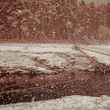

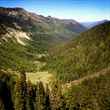
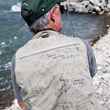




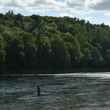



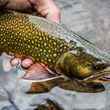
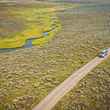



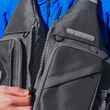
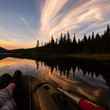



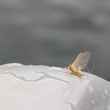
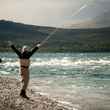

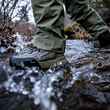

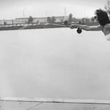
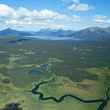
Comments
James Arl replied on Permalink
sometimes the best part of the fishing day is the donut on the way to the river. I feel sorry for those that don't understand that it isn't about how many or how big. Maybe they will get there eventually...
Eric N replied on Permalink
Well said... There is often too much emphasis on size and numbers. It’s all too easy to forget about the rest which, to me, are the most important parts.
Great read. Thanks
Pages